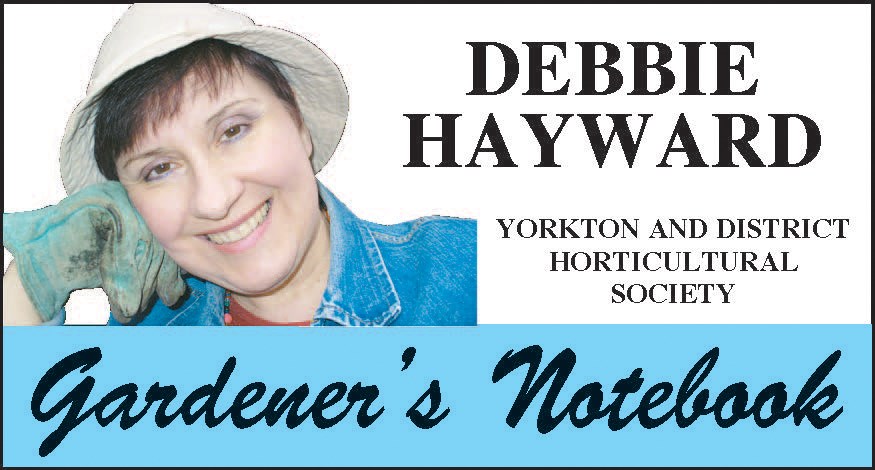The Yorkton and District Horticultural Society will be holding their AGM and supper meeting on Wednesday, November 20. This meeting is for current members only and their guests. Members, if you have any questions, please call Liz at (306) 782-2830.
This is the time when we think about protecting some plants in our gardens for the winter. The recent snows were a bit of a surprise and seem to be here to stay, so how does that affect what we do next? Ideally, we would be protecting tender roses with mulch or mounding soil over the crown; we’d be doing the same with some perennials that are not quite suited to our zone. (We are 3b, by the way). We could still mound up peat moss or mulch, even though there is some snow on the ground, but once we have done that, we can use the most obvious insulator, the snow itself. Of course we wouldn’t use snow that has had salt mixed into it, but if you have nice clean snow on your lawn, gather it up and place piles of it over perennials and tender plants. There are even styrofoam cones available just for this purpose.
FYI, if you have not cut back your roses, don’t worry. It is best to leave them until spring and then trim off any dead branches.
Many of us wrap our cedars. There is always lively debate about whether this is necessary or not, especially with established cedars. Before the soil freezes, we could pound stakes into the ground around our cedars, wrap the burlap on the outside of these supports, and create a surround around the cedar with a bit of air space for insulation. Quite often gardeners just wrap the cedar directly with burlap. This works too, just don’t wrap it too tightly.
Why do we wrap cedars at all? Winter weather can take its toll on cedars: they are still losing moisture through their needles, but because the ground is frozen they can’t drink up anything to replace this lost moisture. If wind is whipping around them, they become dehydrated and begin to turn brown. The bright winter sun bouncing off the snow can speed up this process as well. The burlap helps deflect some of these damaging factors.
As to the question of do we do this only with newly planted cedars or all cedars, well, many gardeners with established cedars feel the plants can fend for themselves and stand up to the winter weather. And they usually do. But probably most of us have had winter damage on good solid plants at one time or another. I think I told you about the damage sustained to some of our mugo pines last winter. They looked quite sad all summer, but we are hopeful that they will regain strength in time and get their looks back. They have the added problem of becoming deformed, pushed into a leaning growth habit by a large spruce that stunted them. We’re not sure if anything can be done to help this problem, but that’s a topic for when we have tea another day.
Did you ever wonder what determines growing zones? In Canada, we have nine zones, beginning at “0” for the coldest areas and going up to “8”in warmer areas. The plant hardiness zones are based on factors such as length of time when there is no frost, minimum winter temperatures, rainfall, and amount of snow cover, wind speeds, and maximum temperatures. The first map created especially for Canada came into being in 1967 from Agriculture Canada.
There is still time to give added winter protection to some of our tender plants; we just have to do it in a different way than we would have done if we hadn’t had snow!
Are you interested in some “Prairie Garden” books? Visit our website at www.yorktonhort.ca for details and have a great week!



